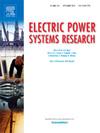Solving multi-area economic dispatch with disjoint operating regions using special ordered sets
IF 3.3
3区 工程技术
Q2 ENGINEERING, ELECTRICAL & ELECTRONIC
引用次数: 0
Abstract
Electricity market operators should solve multi-area economic dispatch (MAED) in shorter periods because of increasing net load variation from fluctuating renewables and demands. Optimization algorithms need to solve the MAED problem within a few minutes, ideally under five minutes, due to increasing net load variations. However, traditional algorithms are less effective in solving the non-convex MAED due to the non-convex characteristics of generating units, such as disjoint operating regions and throttling loss effects. This work proposes a fast, effective, and reliable method using special ordered sets (SOS) advantages to solve the non-convex MAED efficiently. The method proposed represents the DORs and TLEs using SOS type 1 (SOS1) and type 2 (SOS2), respectively, to develop an SOS-based MAED (SOS-MAED). Then, one can efficiently solve the SOS-MAED using optimization software equipped with SOS branching techniques. We test the proposed SOS-MAED in four case studies with convex and non-convex structures. The obtained results demonstrate the strength of the proposed SOS-MAED in terms of efficiency and solution quality compared with earlier algorithms. Moreover, the SOS-MAED seems faster than its equivalent mixed integer model.
求助全文
约1分钟内获得全文
求助全文
来源期刊

Electric Power Systems Research
工程技术-工程:电子与电气
CiteScore
7.50
自引率
17.90%
发文量
963
审稿时长
3.8 months
期刊介绍:
Electric Power Systems Research is an international medium for the publication of original papers concerned with the generation, transmission, distribution and utilization of electrical energy. The journal aims at presenting important results of work in this field, whether in the form of applied research, development of new procedures or components, orginal application of existing knowledge or new designapproaches. The scope of Electric Power Systems Research is broad, encompassing all aspects of electric power systems. The following list of topics is not intended to be exhaustive, but rather to indicate topics that fall within the journal purview.
• Generation techniques ranging from advances in conventional electromechanical methods, through nuclear power generation, to renewable energy generation.
• Transmission, spanning the broad area from UHV (ac and dc) to network operation and protection, line routing and design.
• Substation work: equipment design, protection and control systems.
• Distribution techniques, equipment development, and smart grids.
• The utilization area from energy efficiency to distributed load levelling techniques.
• Systems studies including control techniques, planning, optimization methods, stability, security assessment and insulation coordination.
 求助内容:
求助内容: 应助结果提醒方式:
应助结果提醒方式:


